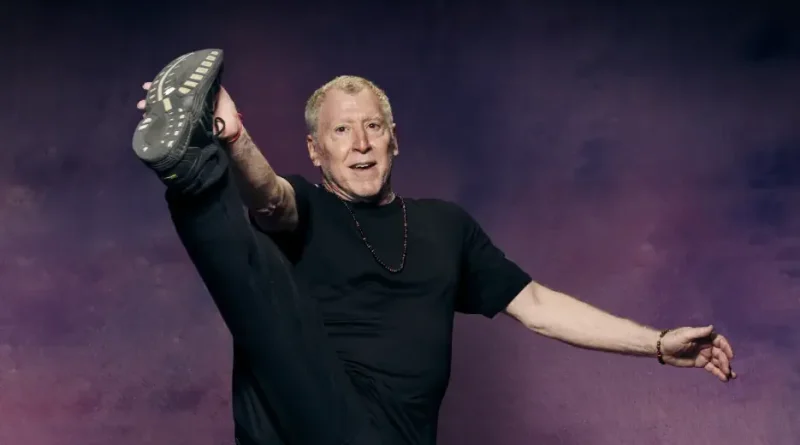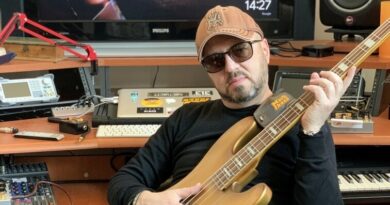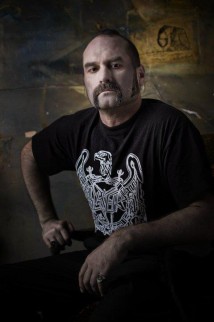Interview with Larry DiMarzio
The well-known and established brand of DiMarzio pickups is one of a few which has had such a significant impact on guitar development. Through many years since the early 70s, DiMarzio provides well-suited products and signatures made in co-operation with artists. Known among some of the guitarists as “pickup guru”, the founder of the company – Larry DiMarzio – sat with us to tell his history and discuss how 50 years ago he started changing the guitar world with his Super-Distortion pickup – model which is still popular to this day.
Michał Wawrzyniewicz: As you’ve mentioned before our interview about Krzysztof Kieślowski, looking at your history, I guess it’s a great story to be covered through a movie or some book at least.
Larry DiMarzio: I’m experimenting now, on integrating the information into our website. This is the new feature of the STORIES tab on our website. We’ve already gone from PDF to HTML formatting, and everything will be converted, we are constantly making changes and upgrading. The world changes, it’s so different from when I started … it was all print. I was shooting photographs in the early 80’s and video in the 2000s. I was designing product, and I was handling international distribution.
In 2020 we got back from the NAMM show (early Feb) and COVID hit, it’s like: they took all my jobs away. I had to think of something else to do, so I started to write the stories. I was doing a lot of reading and watching YouTube, and I’m thinking, “this is not correct, and this is not correct…” – there’s all kinds of errors in information. The first thing I wrote was a Van Halen article and then I started on the “The Birth of the Super-Distortion”. The idea is – and this is not in disrespect to the journalists – instead of the journalist making an observation, I think it’s more important for someone that was in the room to tell the story.
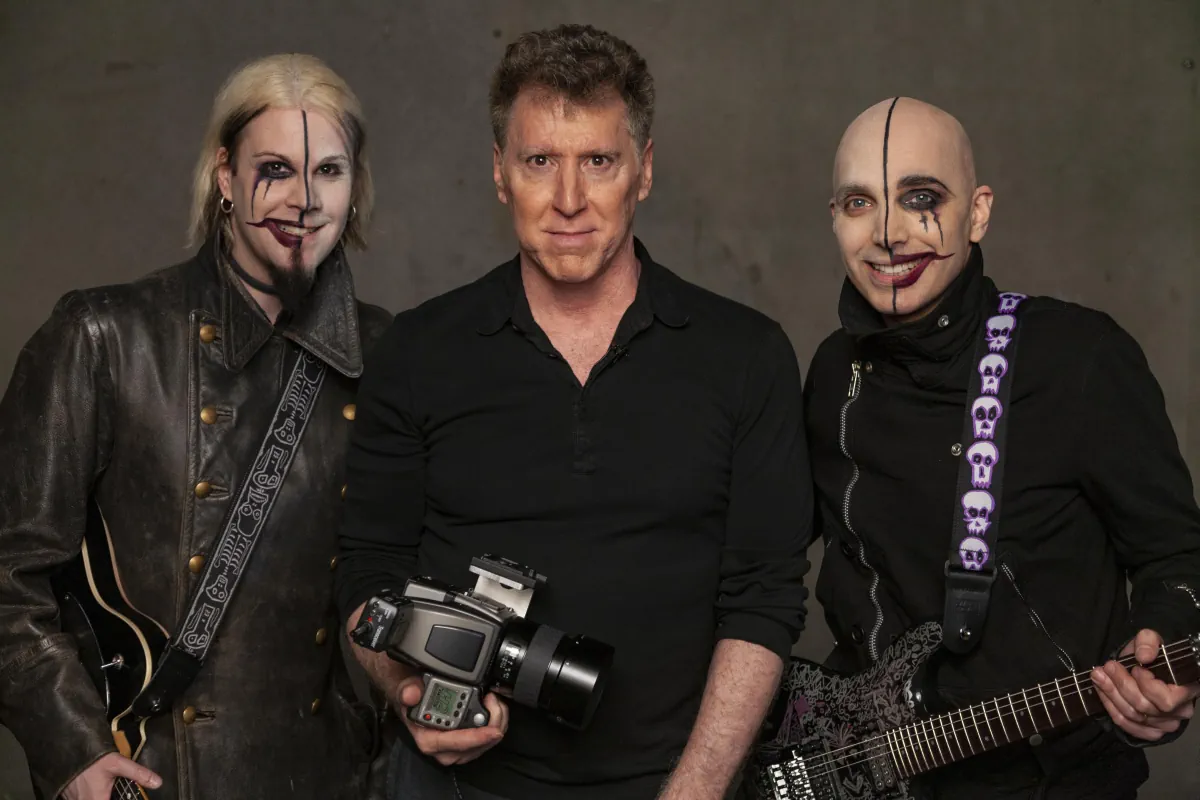
Diving into the beginning of your interest in music – you’ve described this great piece, where you recall your uncle Jimmy, who took you to the Brooklyn Academy of Music, and being only 6 years old, you were attending the opera called “La Traviata”.
Well, here’s the thing about the opera, and this maybe relates to Europe also. My father was born in America, but he went back to Italy when he was very young, he had of course American and Italian citizenship. When it looked like the Second World War was going to start, and because my father and his brother Jimmy had American citizenship, the family felt it would be safest for them to come to America. So, he leaves Italy – Abruzzo – and then goes to America, and as an American citizen, when World War 2 starts, he gets drafted and sent back to Europe to fight. And then he was captured in Sicily and was then a prisoner of war for 21 months in Germany. So, the reason I tell this story is because the experience at the time, for me, was that our parents didn’t want us to be Italian – our parents wanted us to be American. So, I don’t speak Italian – I may look like an Italian, eat like an Italian, I drink like two Italians, but I’m not Italian.
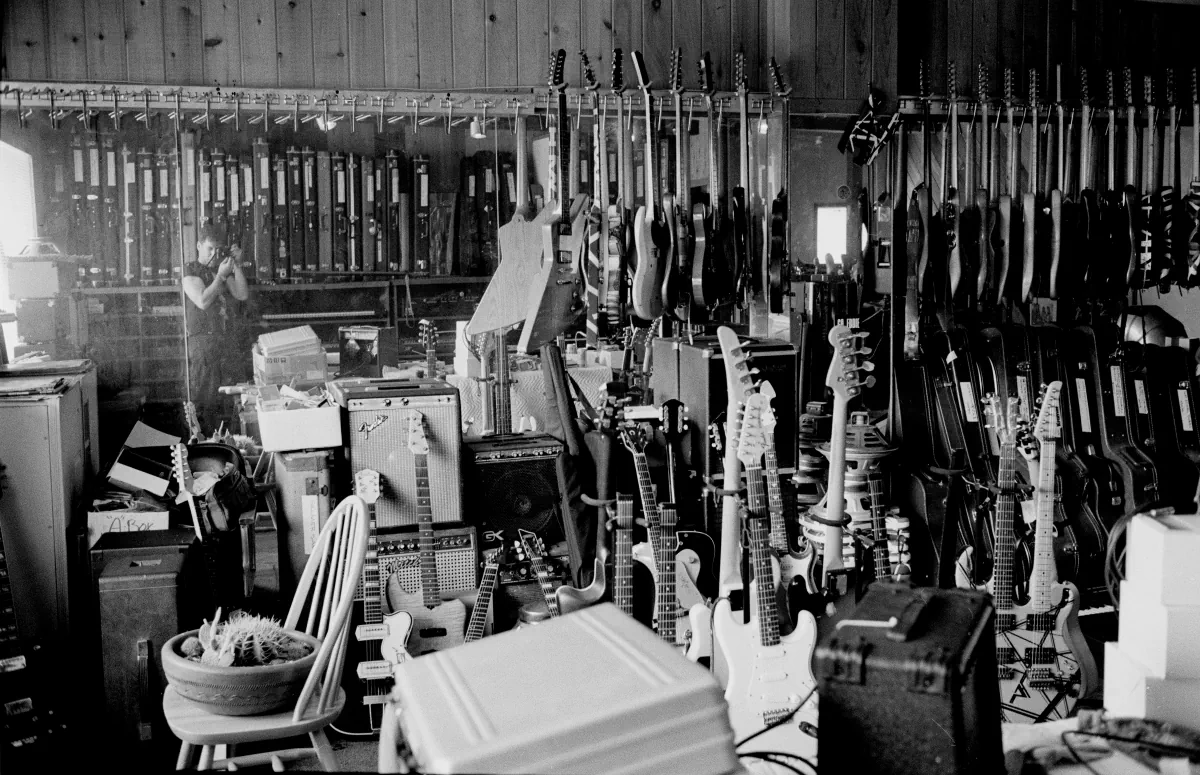
And especially in New York, ‘cause you know – the woman that was my babysitter was Czechoslovakian, her husband was Hungarian, they lived in the next apartment – so you have this New York-style melting pot. Italian and its language were a complete mystery. So, my uncle – in his apartment, which was in the same building complex as my parents were living – when I’d go there, he was always playing opera, and of course I understood not one word. But on the phonograph or on the radio, it was always, “I like the sound”. Unlike the movie theater – being with a big orchestra and singers on the stage and the costumes, for me it was maybe a style of Italian culture, but interpreted by a child who was being educated to be American. So, it’s kind of this cross-cultural thing and again, in my generation the goal was to be educated. My father, and especially the Jewish community in New York knew that if you had education, this was something that couldn’t be taken away from you by whoever comes in and is in power. So, the underground feeling was that education is important – you know, I’m not Jewish, but being in NYC the educational system was all Jewish. And the NY-Jewish intellectual community is very kind – they accepted everyone; they were nice, great. But again, the impression of what a live orchestra sounds like in a good hall, ‘cause Brooklyn Academy of Music was one of these, was just wonderful, and it stayed with me. I went to several other operas with my uncle, but the stand-out was of course “La Traviata”. Everyone was very well dressed, so this was kind of an unusual experience.
You also described the moment when you were choosing between the accordion and the electric guitar – allow me to ask Larry, what was the main reason you decided to take the guitar, because if not for that particular moment, I suppose today we could be discussing your significant and crucial impact on improving the accordion instead of electric guitars. But we are talking about guitar, so I guess this is something worth discussing.
The accordion was very popular in Italian households at the time, and some sort of music lessons seemed to be a good idea. At the time I was going to a catholic school and there was no orchestral music program in the school – so this became something you did privately, and they hired a guitar teacher. My father’s cousin was an accordion player and he played very well. There was a popular American TV show starring Lawrence Welk, who was a famous accordion player. But it all seemed a bit old fashion to me – you know, not my style. My generation comes up in the generation of rebellion – and this is all going on right around the time when The Beatles were becoming popular…and there was a girl that I liked that was in love with Paul McCartney, and of course he didn’t play accordion. Haha..
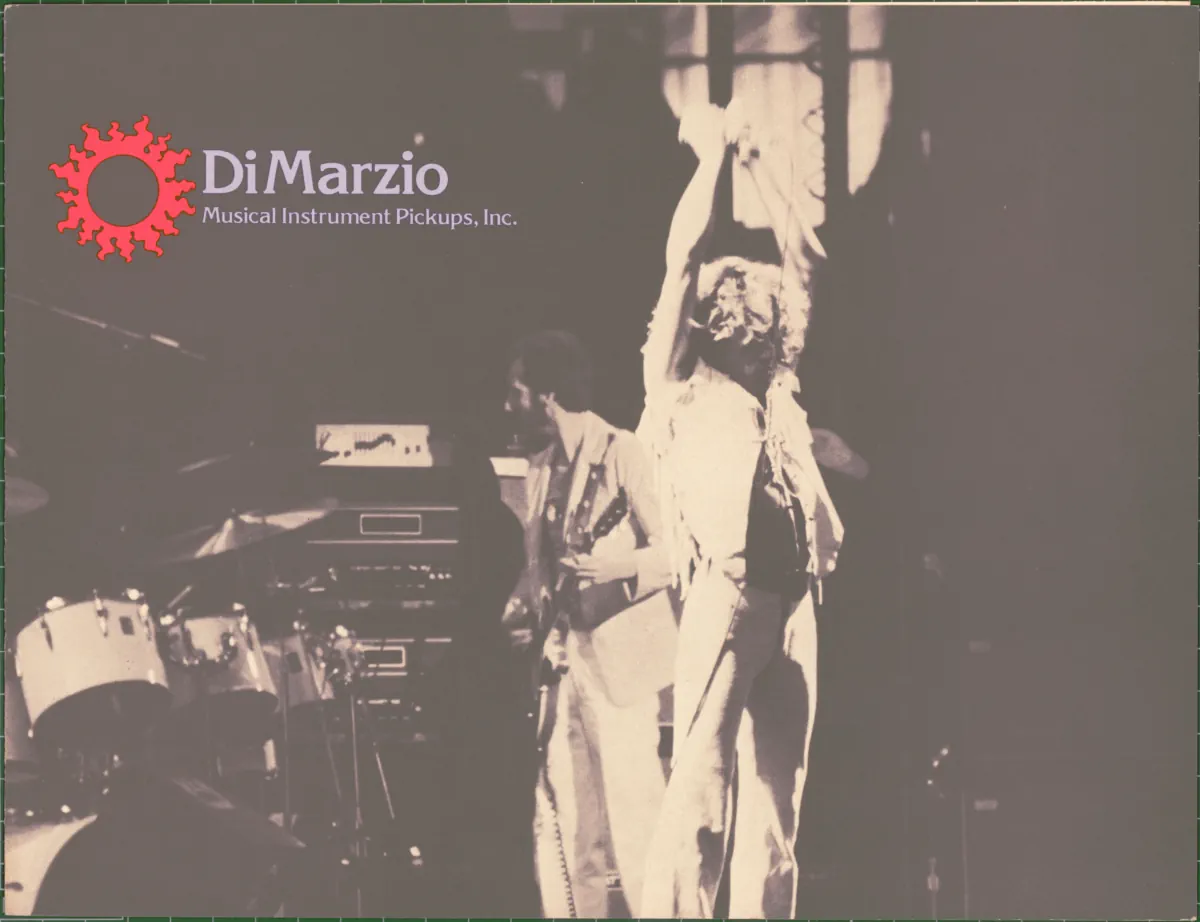
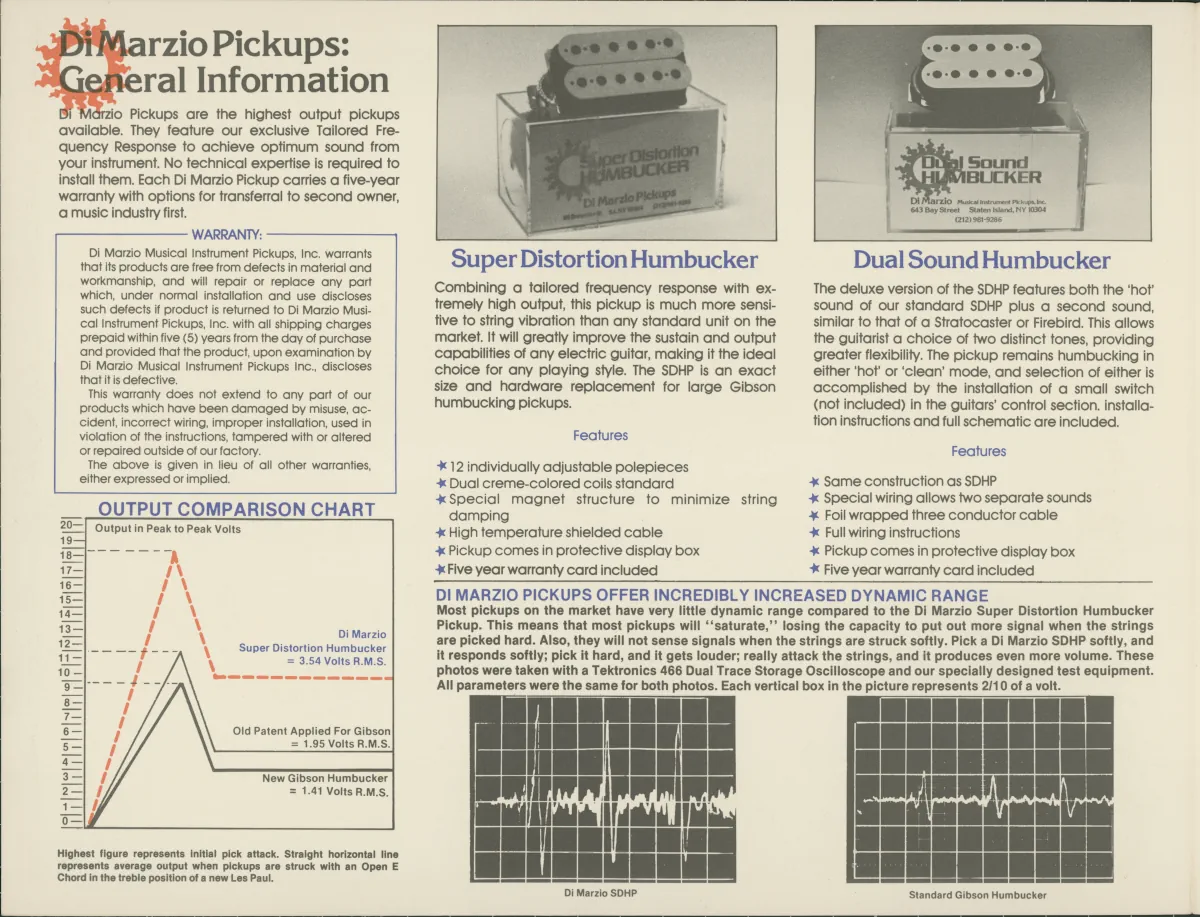
You already said a little about this, but I would like to ask if you could say a little more about the NYC scene at the time, in the early 70’s – which from your memoir seemed to be very vibrant, you know, the literature already proves that, but from your experience it seems that inspiration was around each corner, the talent was at each venue that you stepped into at this time.
You had to seek it out – like anything else before the Internet. There were always parts of the city that were well-known for something. For example: years later, when I was in my early 30’s, I decided I want to study martial arts – I wanted to study r e a l martial art, so I went to Chinatown – this is a section of New York with primarily Chinese people, you wanted to go to some place that was authentic. And even to the point of, there’s a huge Middle-Eastern neighborhood in Brooklyn. If you wanted to eat good Middle-Eastern food, you went to that quarter, the section of the city, the local neighborhood specialized in that style of food. In New York you had 48th Street – this was the section of the city where all the stores were for musicians, and then you had at walking distance: Carnegie Hall, recording studios, this, that – somebody’s making a jingle. So, this was an area for that kind of work to be done.
It was very common that if you wanted something real and authentic you went to part of the city that specialized in it. Greenwich Village was that kind of an area – being the heart of the art scene to a greater degree. And Longview Country Club (later renamed to Levine’s Restaurant), and Max’s Kansas City were very special, because as I’ve mentioned, this pre-dates Max’s having music. So, Max’s was really a place that you went to hang around and of course meet girls and people, it was a very experimental period for New York City, especially in this area.
The fellow that ran Max’s Kansas City, his wife put a book together, and it was the same in San Francisco – here’s Jim Marshall, who’s friends with Bill Graham – so he’s allowed to take a photograph backstage. You know, the big advantage of the situation is that you are connected with a level of authenticity where you can go backstage because you are friends with people, or you can access whatever is going on in that place. So, there’s always a time and a place, especially in a city like New York, where there’s a lot of money. And you want to put out a lot of rebellion, haha.
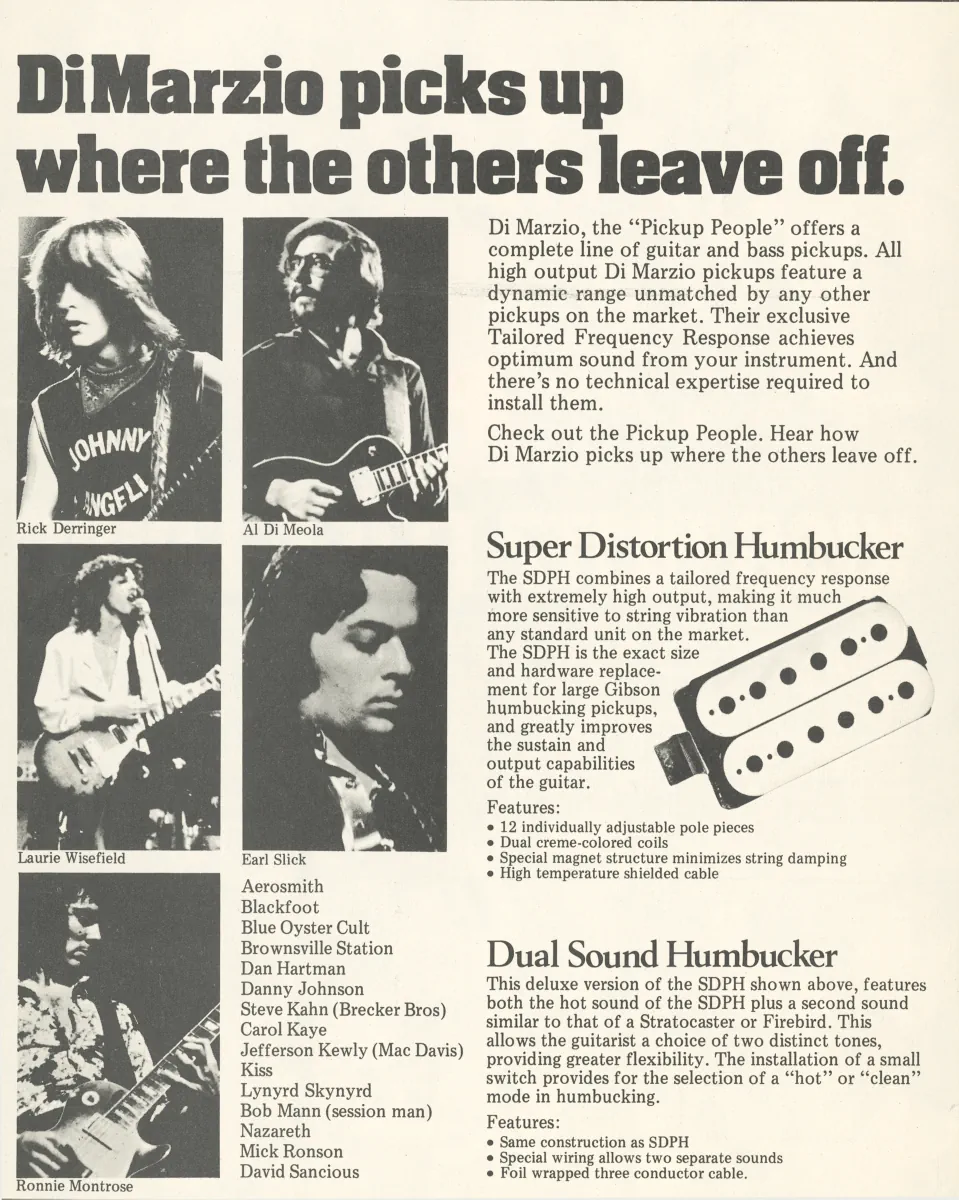
Talking about this period in particular, around the first Woodstock Festival. You’ve mentioned in your memories that you didn’t attend the main event but all this vibe, this hippie movement at the time – how do you recall it and from today’s perspective, what are your thoughts about its impact on the music scene and overall, as a culture?
Everything was changing very quickly, and I was also working for a while in a warehouse for records. It was called “The Records Center” and the owner would send me to the Village – so here you are in Greenwich Village, again, very permissive, a lot of young people meeting, and the record center was wonderful because people would come in and they would ask: “oh, I’m looking for this concerto…”, and I would go over and say: “look, don’t buy the Deutsche Gramophone because the London version is better”.
This was the year when Joni Mitchell played Carnegie Hall, and just came on to the scene. Her record arrived at the store. I didn’t know anything about her. I put it on a turntable and started to listen to the record, and I didn’t get past the first side for two days. And then of course we didn’t have the Internet, Spotify etc., so being knowledgeable of new artists, what we begin to see is that new artists were much more politically aware. You also had the war in Vietnam, which we wanted to stop. You have all the things around this. So, the youth of America, guided to some degree by The Beatles, really felt, as all young people should, that we wanted to change the world. We thought that “Peace, Love & Rock’n’Roll” was a really good idea. There was this feeling. You would go to Central Park and people would be playing guitar, people would be dancing and smoking pot, and everyone’s having a good time. I would think to myself: “this is really nice”.
By this time in America, one of the major impacts I felt was the moment when the Manson murders occurred. This destroyed the hippie movement, and in a very short period of time the fragmentation happened. People are now selling drugs – assorted drugs, the drugs are becoming harder, the people selling the drugs are not hippies, so it crushes this feeling of love and kindness. So, it begins to change, but we are still looking for pockets of alternate culture. People want to be in-like environment. We want to have relationships with the community, but we are re-defining the community. So, by probably 1968 a guy with long hair in the park with his girlfriend – they were probably cool, and you go and talk to them because you had long hair too. And this is why I say we had our own clothes; our own art, movies, and people were experimenting a lot. Although I wasn’t directly involved at this time, I mentioned Andy Warhol was always at Max’s Kansas City, and the backroom, and this drew a lot of people that wanted to meet or visit or become part of the entourage. You know, I wasn’t cool enough, haha.
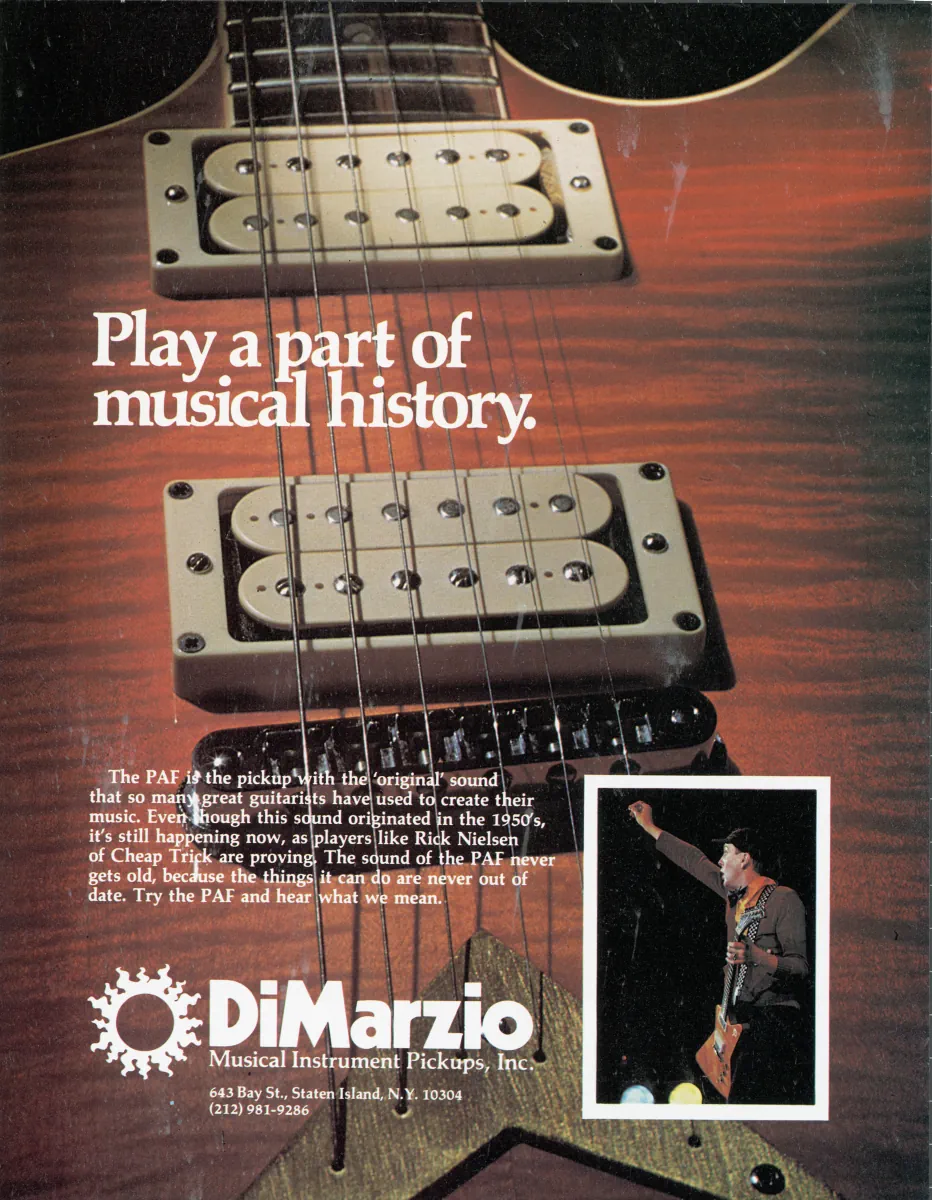
As you said, there was a lot happening back then, and I guess there were lots of traps. What happened, or when did you become interested in electronics? You know, while still being part of the scene, but keeping in mind you have this proper education, to stay focused, going your own way to not fall into these traps I’ve mentioned?
I was very lucky because I had another cousin who was very good with electronics. He was older than I was, I admired him very much. At a very young age he started working on radios, anything that had tubes – he would take them apart and repair them. It was really quite impressive. From a very young age he was doing these things. One time for his birthday my mother asked my cousin, “Bobby, what would you like?” and he said: “oh, a bunch of wires and some light sockets and some bulbs”. He had a tent in the backyard, he then took all of the raw materials, and wired everything up so the entire inside of the tent was now lit up. I think he was 8 years old. I had a lot to catch up to, he was a very talented child.
So, my interest in electronics…when I went to high school, starting at the age of thirteen, Brooklyn Tech had a very technical style, and in the second two years you would have your specialty – which in my case was electronics. We learned about tubes, and transistors were just coming to marketplace at that time. But prior to that we learned drafting, we had a class called “Industrial Materials”, where you spend one year learning how to make plywood, how to make concrete, what’s the difference between iron and steel, how do you make steel…This was so much a part of this, what I would call an “intelligent educational system”, where by the time I was fourteen I knew how to use a micrometer – because if you make a screw, you have to make a precise screw. And this was very much the mentality of that school. In order to get into the school, you’ve been tested – nine thousand people took the test, and then they only accepted three thousand, and by the end of the first year 30% were gone because it was so intense. I laughed when I saw Andy Warhol’s art work for the first time, because for me it looked almost like a mechanical drawing and I didn’t understand the rebellion in the work, I just looked at the lines, haha.
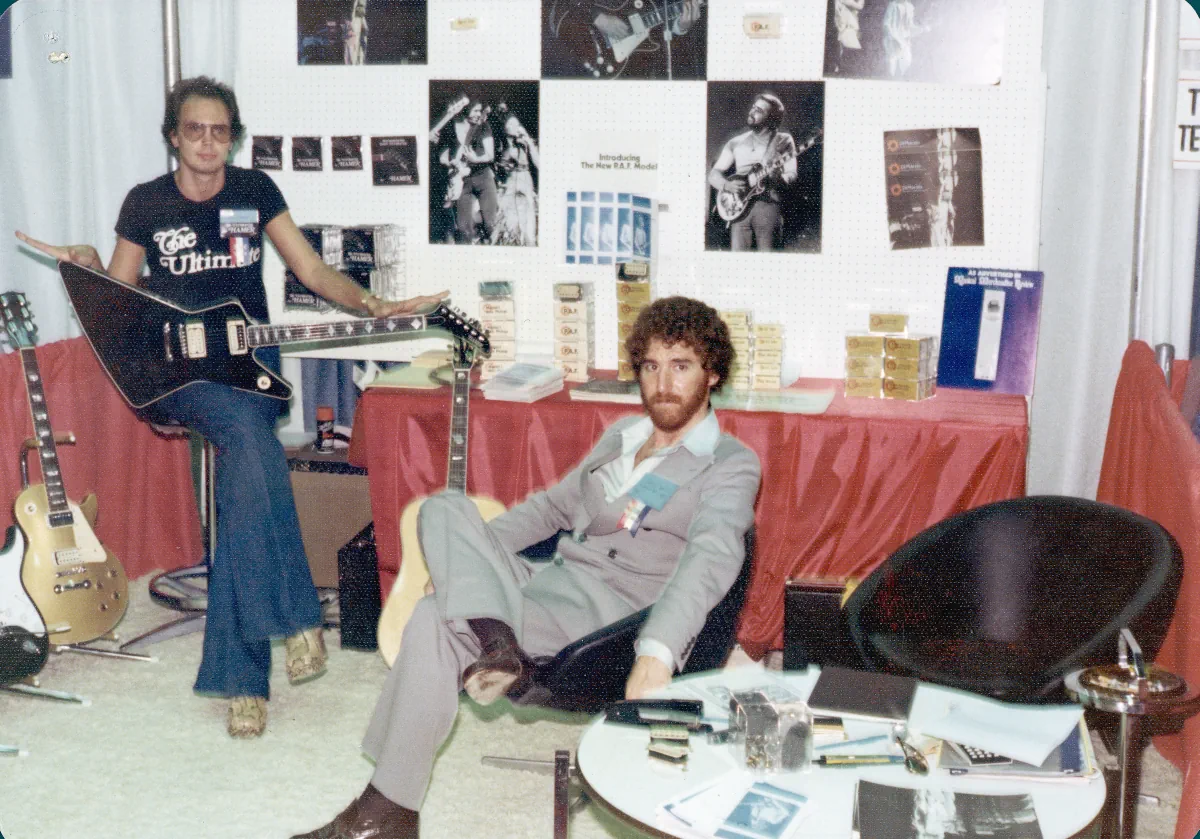
I would like to ask you about your meeting with the guy named Charlie, and the beginning of your job at the Guitar Lab. Would you say that this was the reason you started considering diving deeper into replacing pickups, all this stuff related to electric guitar?
I had no thought to make a replacement guitar pickup. I went to work for Charlie because I liked guitars and I had already been working on guitars. Neither Gibson or Fender was building rock guitars. When Leo sold Fender to CBS, a number of the people in the Fender factory said they were really unhappy. Fender was an acquisition to further the brand of CBS. The corporate position was, “we are CBS, we own the TV shows. We are a major channel, we have a record division…” – they wanted to take Fender guitars, put them on all the TV shows and records… it was a conglomerate idea. The bean counters come in – they try to save money.
The same with Gibson…the bean counter comes in and he says, “you make a pickup for a Melody Maker, you make a Humbucker, and you make a P90 pickup” – when they looked at the magnets, they all looked almost the same so they used the cheapest magnet for all. So, they take the shortest magnet, the one from the Melody Maker pickup and they make that the standard magnet, which means you buy more of one single unit. It’s now shorter, so it costs less, and you put that in all three pickups.
He just saved a nickel on each magnet, but changed the sound of the humbucker and P90 pickups. The bean counter is not an engineer, the bean counter’s job is to save a nickel. And this mentality dominates the business. They started using cheaper woods, they started gluing bodies together, multiple pieces…in the case of Fender, they abandon nitrocellulose lacquer, and the guitars end up with a thick coat of polyurethane. The careful contouring on the body now goes from beautifully cut lines on the Stratocaster, for example, to “close enough”. You then wind up in the neck pocket with a thick coat of polyurethane. Between the polyurethane and the fact that the neck contact point has changed, you’ve now changed the sound of the guitar.
So, everything begins to change, and of course the goal is that we must put more guitars out with the same stuff faster, and this begins the destruction of what made the guitars good. The experience at the Guitar lab was: I was being exposed on a daily basis, every day I worked with beautiful older instruments, and then we would get the new instruments in. You had one here, and one here, and you’d say, “you know, they’ve lost the recipe”. It’s the difference between, I don’t know if it’s as bad in Poland, but if you go to the supermarket in America and you buy a baguette, it looks like a baguette. If you go to a good bakery and you buy a baguette, it looks like a baguette too – but one of them tastes better, haha.
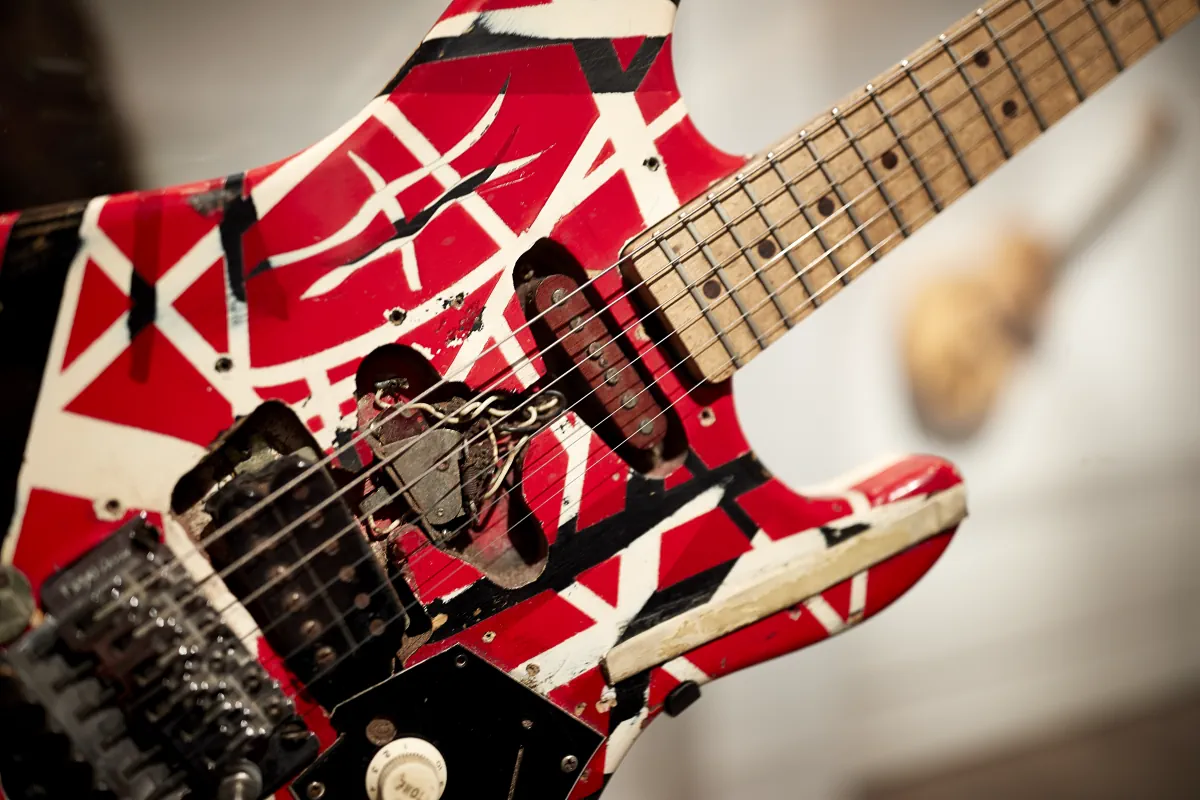
I see. So, Larry, you could confirm from your own experience back then that looking, even today, when people look after guitars from the 60’s and 70’s, it’s not that it is their sophistication, or something like that, it is that the guitars from that period are better indeed, still to this day, is that right?
Oh, absolutely. And you know, I believe that you don’t have to use the most expensive parts at some times. An example would be…I started making guitar bodies and necks in the 80’s and I made them like the old Fender ones. And we did a series of guitars by, I think, 1983. We were building production on what I thought was the best Fender neck, V-shaped. I changed the radius on the fingerboard, nine and a half inches. I used jumbo frets, and we did tests between quilted Maple and just flats on normal Maple. The cheaper Maple was a better sound.
A lot of times I designed speakers – sometimes if I bought the best capacitors, I didn’t like the sound. You know, I tell the story of building a textbook amplifier, and we built a better power supply. I used better transformers, it was super-linear, you plugged the guitar in – it sounded terrible. It would not break up. One of my favorite speakers, I would describe it as wonderfully s**t – the Celestion G12M25. The cone is sloppy, the quality of the cone and the paper is not very good. JBL and a lot of other people built much higher quality, with better control, but that Celestion speaker sounded better with the guitar. The first time I went to a concert and I saw Neil Young live – he was out there with these old, tweed Fender amps, and the sound he was getting was fabulous… from a Gretsch! I wasn’t a big fan of a Gretsch, I owned several and they were a nightmare. But there he was and he was getting this great sound with this amplifier. So of course, what would I do? I went out and I found the old Fender amplifiers and I took them apart. And like I said, a lesson was learned to trust your ears and not the textbook.
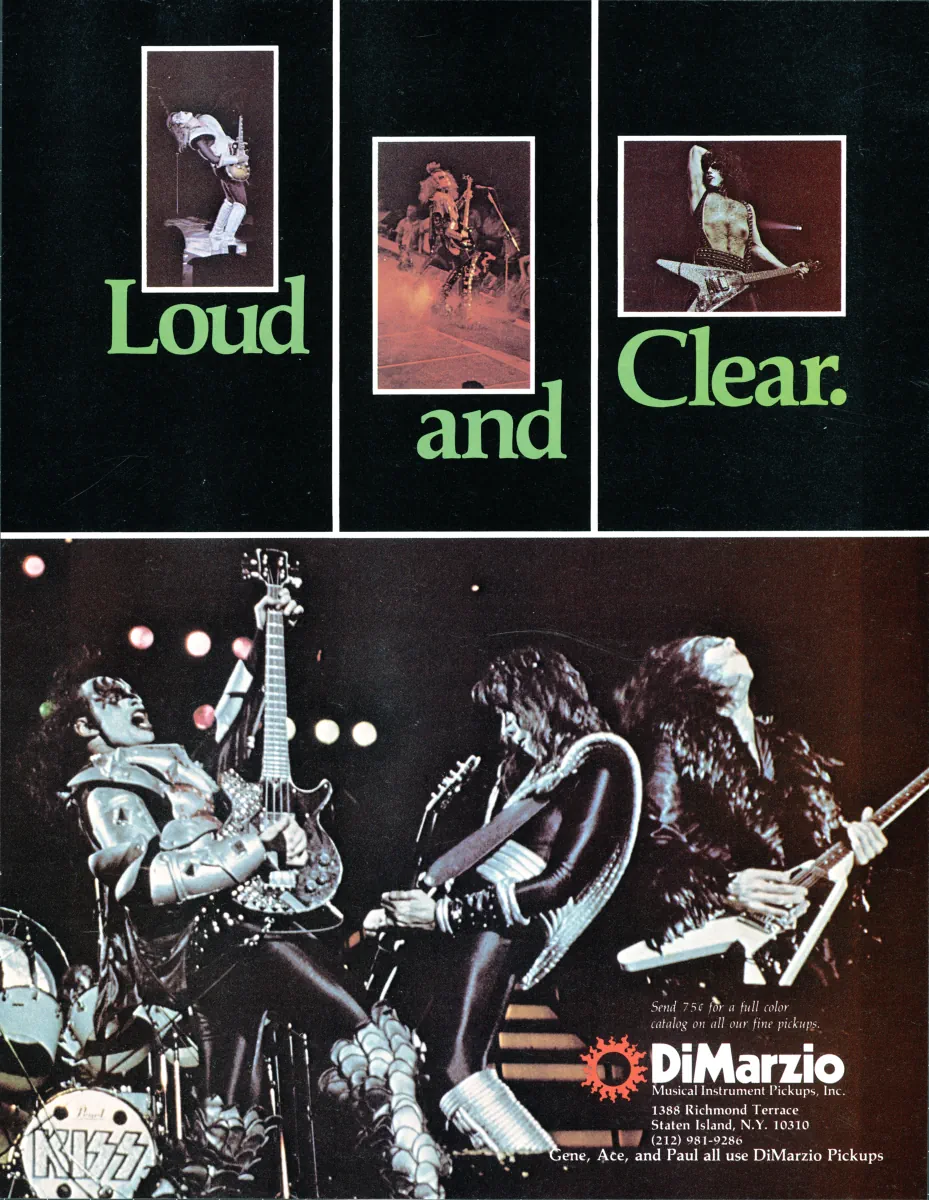
So, you would say this was more the urge to experiment, or the necessity to improve the technical aspects of this stuff?
I make improvements, the Super Distortion isn’t a PAF Clone. I made something new and continued building on those concepts, and help develop new artist guitars as well.
https://www.dimarzio.com/artists
I still have a wonderful collection of vintage guitars as well. A 1960 Stratocaster, a 1951 Telecaster, a 1959 Cherry Sunburst Les Paul, and a 1959 Gibson ES335 dot marker. These are references for vintage guitar and pickup projects. It’s always the goal with DiMarzio, how to improve the existing product.
I’ve made Fender replacement necks; I started with what I thought were the best and we made improvements [shows the guitar]. Number one, instead of being a 7-and-a-half-inch radius, we set a 9 and half inch radius, and we went to big frets. I took the stock Fender-style bridge, which I liked, and made improvements. We made tracks on the bridge so that the saddles wouldn’t move.
We used the same metal, because if you go to brass you change the sound of the Stratocaster. But then, I made two versions of the bridge: one of them is two and a quarter like the Strat, the other one is two and one-eighth, so you could put a Humbucker in the bridge. My mentality was always how to simplify and make improvements on the good designs from Fender and Gibson.
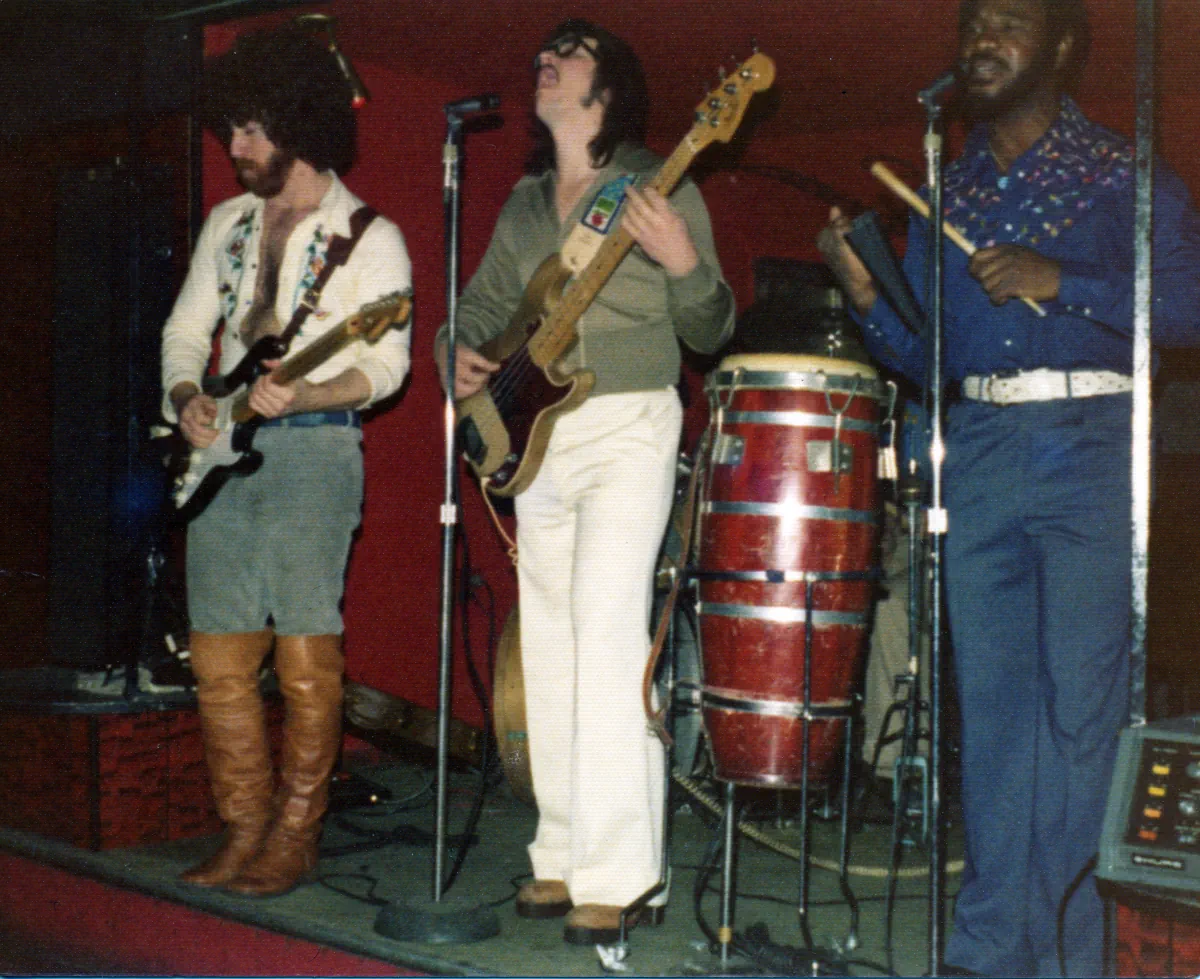
You have already said a little about your work at the Guitar Lab, but how do you recall your time at this place? Which period do you consider as the most crucial for your next steps you’ve taken in terms of your own career as a “pickup guru”?
The best period was when it was just me and Charlie in the shop.
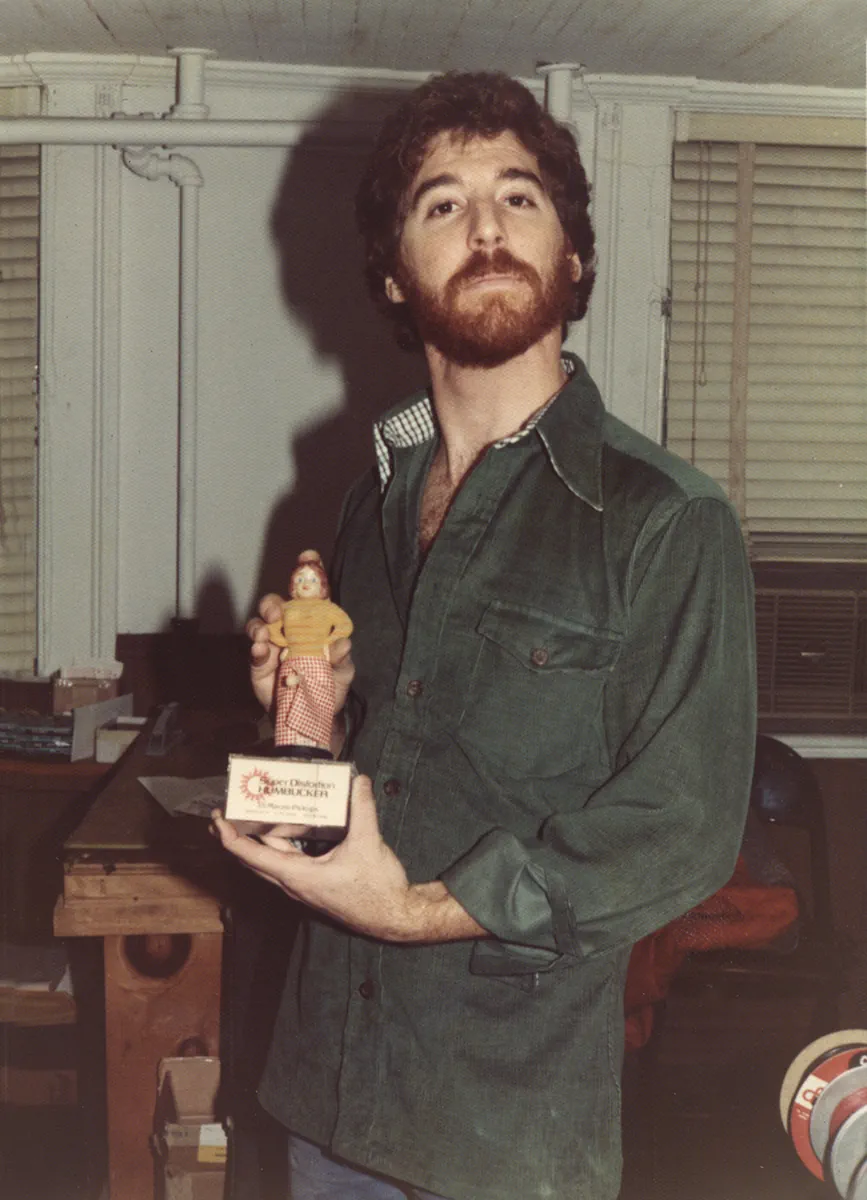
Allow me Larry to extend my question a bit: was it the time you’ve described, when Charlie gave you the box of broken pickups and just said to repair them?
Yeah, because I needed work. So, I take the box home, I look at them, and look at them mechanically: “ok, here you have wires that are disconnected”, you know, Charlie had no knowledge of any of that. Or you know, “this is a bad solder joint”. So, 20% of the box can be fixed very easily with a little bit of solder and a little bit of work. And then I began to think, “well, I’m now a pickup repairman, not a pickup designer”, haha.
This is one of the things that I think is really critical, so maybe the question is: from repairman to designer – and what began to happen is, you know, you listen to records, you listen to Cream…I mean I saw Jeff Beck live with Rod Stewart at the Filmore. He gets a great sound. I see Leslie West live – this is a bigger, better sound than anything I’m hearing normally. So, it becomes a matter of how do I get my guitar to sound more like that, because this is not the sound of a stock Gibson PAF pickup, even in a Cherry Sunburst Les Paul. I owned two original Cherry Sunburst Les Paul’s – a ’58 and ’59, but I had worked on at this point probably twenty of these guitars. And when I finally owned one, I literally took the Les Paul that I’ve built with the Super-Distortion and the neck pickup that I made, up against the original, the best Cherry Sunburst that I ever heard or played. If I had to go and play that night, I would take my guitar, not the original – because it was better. It was louder, it sustained better, it was an absolutely fabulous guitar. And I kind of laughed because it was like although I was looking to do something like that, what I actually wound up doing…I began to feel it was much better than what the original guitar was.
Keep in mind – critical in the case of Les Paul – Les Paul stopped playing the Les Paul. He wanted a low impedance, really clean guitar. I remember when those guitars came into the marketplace, I played it and I hated that guitar. It was nothing like I wanted the guitar to sound like, it wasn’t like anything any of my guitar heroes were playing. This was not the sound I was looking for, at all. And again, this is coming from popular music, you know, guitar music: Cream, Hendrix, Jimmy Page, Leslie West to Les Paul. I don’t want this clean sound, I’m not impressed. The Americans invented blues in the black community – it then went to England and it changed again, and then it came back to America and it transforms again.
The takeaway that I had, and I have it in an interview I did with Leslie West…I asked the classic question: “what were your influences”, and his answer was: “I wanted to sound like Eric Clapton”. And I laughed, because Leslie’s sound to me and Eric’s sound were different. You know, Leslie’s is much more vocal, but if you think about it, the origin of that sound, the American Blues was filtered through England, it became modified, Clapton of course was affecting George Harrison and The Beatles, and then once again it came back to America – and it’s always transforming. Music and guitars are always changing. My goal was not to build a vintage style guitar pickup in the old version, I wanted to build something better, more modern, and the ultimate realization was: “I’m sitting with the guitar I’ve built, that everyone wants, and I prefer my design”. And so did a million other guitar players.
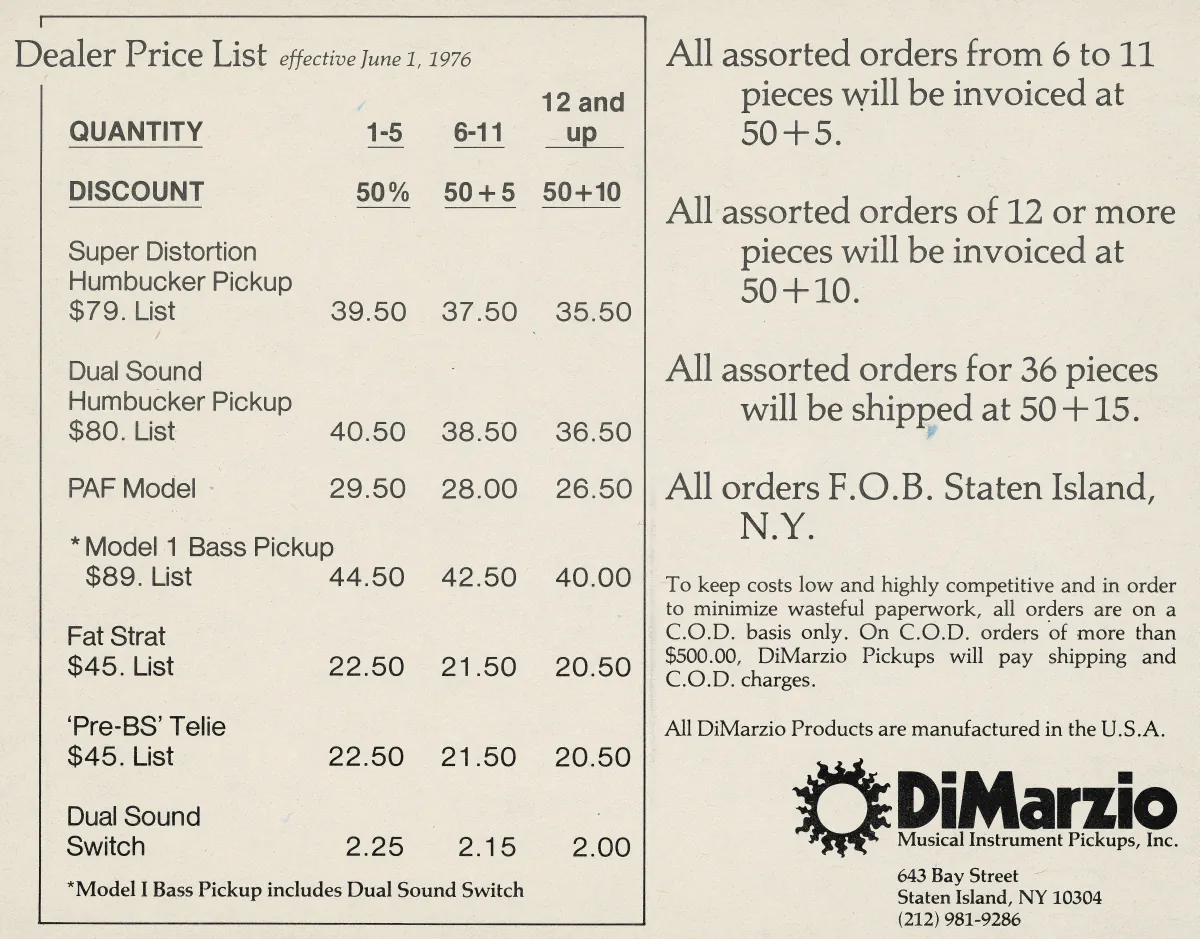
And by the time you have met Bill Lawrence, did you already have this “word-of-mouth” marketing where you were already well-known as someone who makes custom guitars?
No, actually I was becoming well-known as a guitar repairman. At the time that I met Bill, he was the only person I knew that was making his own pickup. And that’s this pickup with this stainless-steel cover that doesn’t look like a regular guitar pickup. But Bill was the first person that I saw who used the ceramic magnet. People would come to me; word-of-mouth, because I did wonderful fretwork and my guitar setup was really high quality. And remember, this comes out of what Charlie was doing – he liked jazz guitar players. I like jazz guitar players; I was studying jazz, but I wanted the sound of rock & roll. Billie wanted the sound of jazz, he wanted it clean, bright – and to me, if you make this loud [covers his ears] – it hurts my ears, haha.
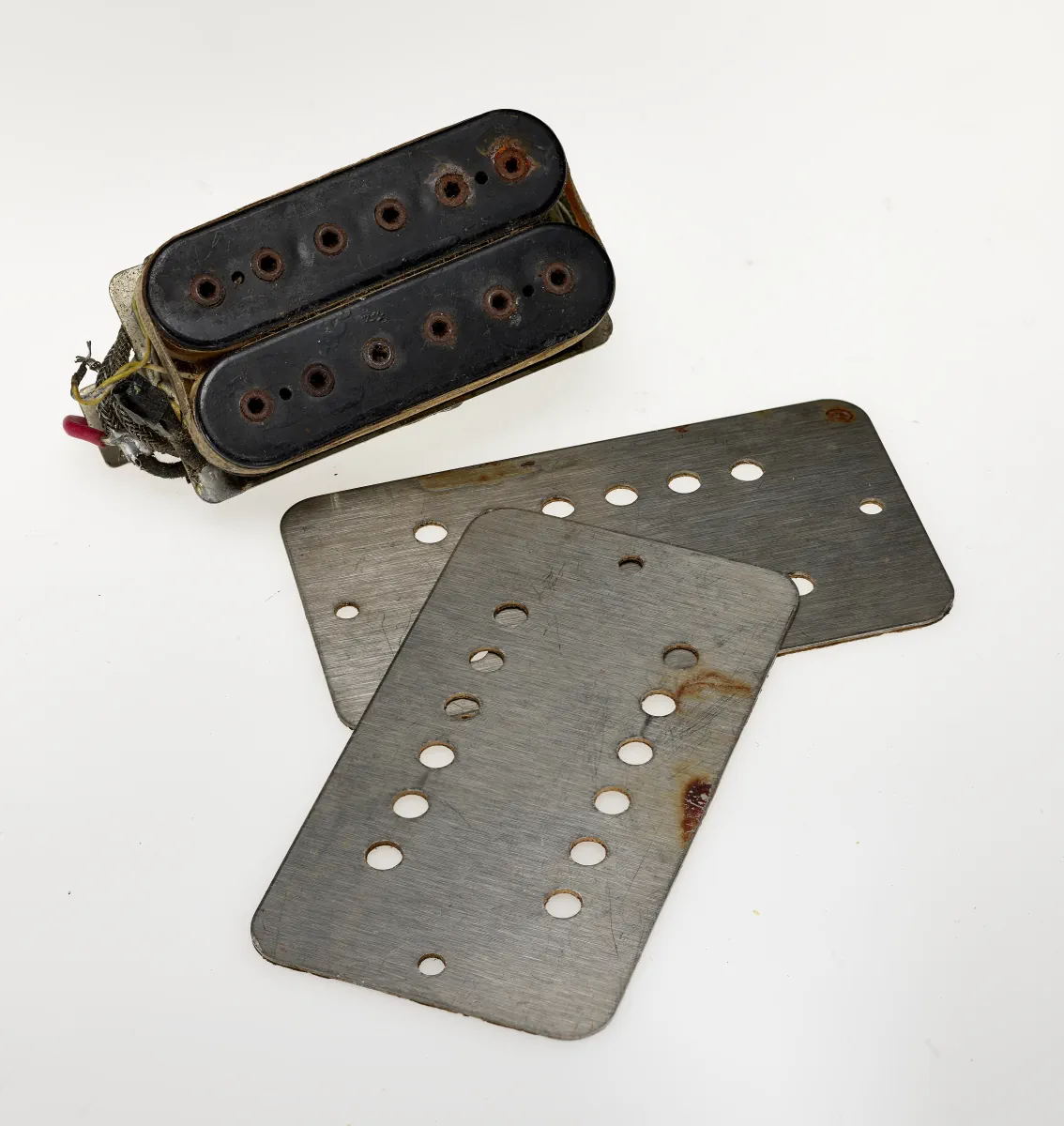
The moment when Bill left for Gibson – you have described this moment in great detail in your memory about the Super Distortion. Could you say a little more about this to our Polish readers, as I guess this pivotal moment I would say, is worth mentioning.
Well, it was a big surprise, because as I said, I thought Bill was going to take me with him to Gibson. And we were going to correct the mistakes that Gibson was making, and even if you look at the L6 guitar, the guitar that he designed, it’s not a rock & roll guitar. It’s not the guitar Gibson should have been building. If I was there, one of two things would have happened: I would have changed the position of the Gibson Company then, or I would have gotten fired for telling them things they didn’t want to hear, haha. And I’m feeling good, I was proven right. What is the most popular Gibson guitar? Les Paul – my dream was, is: you need to build that Les Paul, which is what they’re still talking about doing, and once you build that Les Paul, we build the credibility of the company. We are building the Les Paul that you want, right, and then I can go and design new guitars. But the first thing is to re-establish the credibility of the Gibson brand. And that means build the Les Paul, build the 335. Gibson has never had a successful bass. I could have designed a successful bass for Gibson.
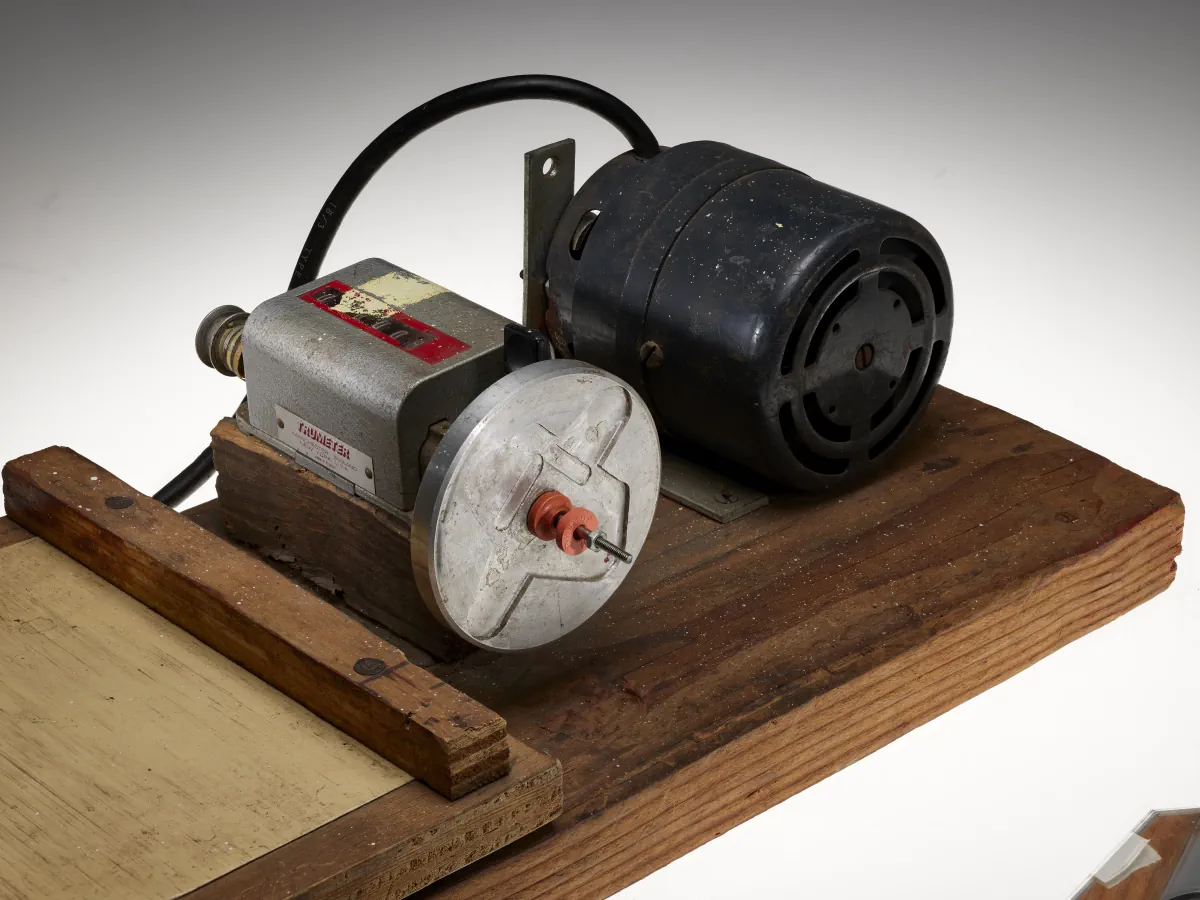
Looking from today’s perspective Larry, may I risk to say that thanks to that situation where Bill has gone to Gibson, having left you, this helped to establish your own company and to go your own way? So, if that wouldn’t have happened, we wouldn’t sit here today and discuss the Super Distortion?
I believe it’s true, if I would have gone to Gibson. At the time, my thinking was: this is the major manufacturer with the brand and the body that I admired. My feeling is like cooking – you have to respect the ingredients. As an Italian-American, who once in a while cooks, I walk to the market, I don’t have a recipe, I look: if the peppers are fresh, I’ll make peppers, if the tomatoes are fresh, I’ll do something with the tomatoes. So, I have a relationship with many things that are that way. If we can buy good bodies in alder, then we make a big production of alder and if we can’t get alder then I have to find another appropriate material that has the quality. The one thing that’s never been said at the DiMarzio company is, and this would be an example of what I would say to production: “oh, please make the Super Distortion cheaper”, ha. You know, my feeling is that you must maintain the quality and the relationship with the musician, so that they understand that they can get the same thing that they always do. Like my favorite restaurants – I go to a particular restaurant because I want a particular dish. If you change the menu every week, and the main dishes are no longer there, I stop coming. I don’t mind trying something new, but if I want a pastrami sandwich, I want that pastrami sandwich from that Jewish deli.
Talking about this cooking analogy – would you say that people who provide the vegetables each week to this particular restaurant, and keep everything in-line to make them fresh and in the same quality as always, have their specific role in the final dish which lands on the table?
Absolutely!
So, would you consider yourself as someone who took a huge part in a lot of legendary, iconic songs, which were made using guitars with your pickups installed?
You know, I give the musicians, like the guy who provides the rice to the Japanese sushi restaurant – I give you the highest quality ingredients and then your job is to be involved in the next stage of development. I feel I have a relationship with it, but it’s always about the musician. If you go to the DiMarzio website, we have a lot of artists – I work with a lot of different artists, and I also do whatever I can do to help promote their career. For example [showing photos], we are always taking photographs, like with the most recent Steve Vai album.
When you look at all these artists, some of them you have already mentioned, like Steve Vai, your friend for a long time…you have a lot of musicians who are your friends, colleagues, you have vast history with them. The same with some new artists, who are making careers and you know they are using your stuff – how do you look at this nowadays, with this technological development? You know, while being such big part of the careers of so many artists, playing a huge role in development of guitar music… and still being so humble! How you do it?
Sometimes not so humble, haha. In relationship to the artist – my job is to anticipate the need that they have. So, for example, if we were working on a project such as the PIA guitar…everyone on the project loves Steve Vai, he’s a fabulous person. I’m going to do my best. What I have to do is make the sound that works for Steve, which means if we have to put in extra time, we’ll do It, we don’t care.
When me and Mike – the art director for DiMarzio – began looking at what Steve was working on, we had to make cosmetic improvements to add to the beauty of the project, of what he was already doing. So sometimes you start with an experiment: [shows the prototype] This was one of the early experiments for the gravity storm pickup, which was on Vai’s Rosewood guitars. So, we are always experimenting with ideas that will help the artists. The idea is that I don’t want the guitar to stay the same, if that makes sense. So again, here is what we did with John Petrucci: we took the album art, which when we did this was with the drones that were on the cover of the album, and we made the guitar pickups. We have drones, and this is a brand-new technology. We actually cut the artwork into the cover, so literally it’s completely open.
The idea is what do we do to make the show better? You have to go out there, you have to play, get a good sound, travel, we are – DiMarzio Company and me – the backup for how to make it better and easier. When you plug the guitar or bass in, you should sound good. Of course, you can go over to the EQ and do anything you want in the digital domain, but it’s one of the things I say about photography: If you want to take a photograph of a pretty girl, start with a pretty girl. And here in the studio I also take all of the still life photos for the company, we record, and we shoot all of the artists. Well, not all, but a lot of the artist photos happen here in the studio. I’ve designed speaker cables for HiFi and recording, interconnect cables, guitar cables. We also have a full 16-channel recording studio here, so you have Distressors, Shelford Channels from Rupert Neve, original API equipment, sixteen full channels of digital capture. So, I’m always experimenting with audio and video as well as photographs.

Thanks for showing all this. A lot of people see the success but not all of them think much of the perseverance, how many fails you need to make before you are successful. And you have described this perfectly in this memory about the Super Distortion in the part about those broken pickups Charlie gave you. You described that not everything was working; you had some thoughts about giving up when you didn’t have the result you wanted to achieve. The success is always visible, but not many people think about how many things fail in the meantime.
There are lot of things that fail. For example, we have a very successful guitar strap that I invented called “The Clip-Lock guitar strap”. So, then I decided I wanted to make leather guitar straps, and we made these beautiful leather guitar straps. No one cares, hah. This is Italian leather with rhinestones, everything is assembled by hand. I then came up with another idea on the guitar strap we made – this is all, again, Italian leather. This piping is all real deer skin – I live in Montana, why not use the deer? It never sold well. My standing joke is: you have twenty ideas, you then cancel eighteen, you take two, you build pre-production prototypes and then maybe one of the two gets some level of success.
For example, I just redesigned the jazz bass pickups that we’re making, I wanted to do a modernization, so we have metal covers, which reduces the noise. The covers are arched so that they’re much more comfortable, and they contour to the shape of the fingerboard, instead of being flat like the jazz bass. We take the mounting screws and we get three of them. You now mount the screws directly to the body as they always did, but they don’t stick through, so you’re no longer hurting your fingers, all the edges are rounded. We changed to neodymium magnets on the pickups. And this was all done during Covid, because again, I couldn’t do anything, so I had to, you know, rethink. I think almost everything can use a little bit of improvement. I take a photograph and I think to myself: “this is good, you did a good job, but what would you change to make it better?” So, the next time that you do something, you know…I made special walls in the studio. Here’s a photograph of Tanya – we just shot this recently, she’s on the website. The wall I created was in order to get real texture. Instead of a painted texture, this is actually clay. The clay is done in a particular color so that it works with skin tones. And then it’s applied in order to make that work.
It shows how much effort you put in, all these details, and Kudos to you and your team because it’s really impressive. Over all these years, after all these pickups you have designed and released under your brand, do you consider any particular projects as the most important throughout your career?
I think the advancements of the pickups were really the key, and of course there’s a lot of copy of what I have done in the marketplace. I wish they would send me five dollars for each one they sell, because these are my ideas, haha.
As you have mentioned this, did you have any infringement of your trademarks, IP stolen from you?
All the time, people are always taking things and you have to tell them to stop, yeah.
As far as I know you have four registered patents of your work.
You know, in the story I make it clear: the Super Distortion is not a Gibson pickup. The Gibson pickup has a metal cover. No Gibson pickup was produced at the Gibson factory that did not have a metal cover for the Humbucker. It was my idea to make pickups without covers, not Gibson. They copied me. As a repairman I knew I wanted the pickup higher so it could be louder. I made the pickup double cream, so DiMarzio pickups would be recognizable from forty feet away in a smokey bar. I created an identity for DiMarzio. Our original bass and Strat pickups are cream.
We had and have our own sound, look, and our own approach. You know, DiMarzio has been a rock’n’roll company from day one. Al Di Meola played very modern electric jazz in 1975. The artist will always rethink and make adjustments to a lot of the ideas that I may come up with, and now more and more we work more directly with the artist to make a signature product – where they’ve built the guitar, and the pickups have to conform to what’s happening to the guitar, their style of music, and their equipment. So, we fine-tune that aspect of the chain. So often it has to go from what’s in my head, out my hands, through the strings on the guitar, into a piece of wood, to be picked up magnetically, to travel down a wire to hit the amplifier, which then puts it into the speakers – And they all have to link up. And the more I eliminate, the more I get you the sound you want to begin with, and the happier you are.
It’s like because I shoot photographs and I like audio. At some point I found…I just bought a camera recently and I said to the guy who was selling the camera: “you could take 50% of the pull-down menus and throw them away because it’s not my style, I’m not going to use these because it doesn’t give me what I want. What I want is very simple, I want these characteristics and I want them as high quality as I can possibly get them.”
And I assume this is your approach while designing and collecting any ideas for your stuff?
Correct. I don’t want to go in there and put a 3db boost at 2500Khz and a 6db boost at 14,000Khz because I don’t like what’s happening on the high-end. It should be: play the guitar, wow, that’s in the groove. And then maybe minor adjustments to fine tune something.
I know that it may differ by the artist, but to what extend do artists using the DiMarzio pickups have influence on the development and creation process while preparing their signature models?
At least 50%, because what we do is, for example…about five years ago we started working with Joe Duplantier from the band Gojira. By the way, I love this guy, he is such a good guy. And I said: well, what’s the guitar? The guitar is a Telecaster made out of a mahogany body, but I’m using Gibson parts on the Telecaster. I laugh because that’s the guitar I built, you know, in 1972. I say: no problem. And what kind of amplifier are you using? “Oh, you know I’m using XYZ”. OK. So, I said, let me send you a set of stock DiMarzio pickups from the shelf. This is the starting point. So, we send a set of 36th Anniversary PAFs. He installs them, 123 we get back: “I love these, I love these. I love these”. Two weeks later: “Oh, can I get the bridge pick up a little darker?” Of course. We make another prototype, we send it: Is this what you want? “Oh, that’s so much better, I like that better”. Sometimes it’s really simple like that and other times it’s a from the ground up development.
For example, when Steve Vai has a brand-new guitar. The woods are different. He’s changed the hand grip to the new shape. And so, we get the guitar and we submit some samples. We start out with that. In that case, we started out, I believe with the original evolution pickups, and then Steve says: “I want more output, I want less output. Can you do this?” And we make a list and we just continue sending samples. And even to the point of, like, if I’m organizing a photo shoot, I like working with a stylist. So maybe two weeks before the photo shoot, if we’re in Los Angeles, I will be on the phone with the stylist and we arrange, we get together, we try the clothes on and then you say: “Yes-No”, “Yes-No”, “Yes-No”. This way, on the day of the photo shoot, we’re not trying on clothes – we’re taking pictures.
So, part of my job is to eliminate all the junk, so that the artist can pay attention to what is critical and what really matters. In the case of the Hydra cover, I saw the guitar maybe three months before the photo shoot and they were still working on various aspects of the guitar. But I saw the first set of photos of the guitar, which meant I have to make sure that this guitar pops. There are so many parts of this, so I’m thinking what kind of a light do I use? You know, Steve Vai doesn’t need to be bothered with this… “Oh, Steve, what lights do you want me to use?” …No, he shouldn’t have to deal with any of this nonsense. My job is to anticipate and make sure everything is what it needs to be when we do the photos. Steve is fabulous, but in one day we did these shots [showing photos], all in one day. Then we had the Hydra. So, each time my job is just like in the situation of the sound. Here’s Eddie Van Halen at the studio. In each situation, my job is to eliminate the nonsense so that the talent can do their job and perform, so to me… I’m road crew, haha.
Thanks for showing all these Larry, it’s like a trip through the history of guitar music, and your role in this is significant. Allow me to ask about your personal opinion, you know, just as a human being, your feelings about this “butterfly effect” you’ve made with the Super Distortion.
Well, my feeling is that it’s a contribution. I work seven days a week still, I would like to work six days a week – that’s my plan for next year. And I like what I do, I like dealing with musicians, I like working, we are actually starting something new that I’ll tell you about that you may enjoy: with the demise of the record companies and promotion, the artists are responsible for promoting themselves. And one of the new things on the DiMarzio website is now videos and stories, of the artists, obviously photographs of the product, but what we’re going to do is we’re creating an independent publicity agency for DiMarzio artists. So, for example, If I do an interview with Jake Bowen for DiMarzio and I have photographs, I keep exclusivity on 20. I then give the artist everything else to use. We are then going to offer them a list of 50 worldwide magazines. They say: “I want to be interviewed by the following magazines”, we make the connection between the artist and the magazine, and we give you the photos for free. And it’s beneficial to both of us. I don’t want 150 photographs on a computer hard drive. They do me no good. They do the artists no good. It’s better to put them out in the world because my feeling is that part of my job is representing you, and this is part of the ongoing idea of the relationship that DiMarzio has with artists.
I had a nice relationship with Van Halen, the relationship broke down because of MusicMan. And Van Halen’s relationship broke down. There’s a story that I wrote, when I shot this photo of Van Halen, about what it was like. I go there, I have a whole plan. Eddie’s late, no one even told Van Halen that I was coming to do photos. Ed Leffler says shoot the show. And I said to Ed Leffler: “I have this idea; I want to take a photo of Eddie jumping in front of all the amplifiers.” So technically I have to figure that out. The Van Halen band is going to punch me in the face if I use strobe, because there’s going to be strobe going off all the time at the front of the stage – they don’t want that. I had an experimental film, made by Kodak – Kodak 3200 – and I custom processed the film because then I could shoot the show handheld. No flash.
This was also some part of innovation, right? You didn’t have any blueprint for this kind of photo shooting.
Sometimes I feel that, if you have a level of technical expertise, then the technical aspect is always in the background: “How do I make this happen?” Same thing here: She likes blue, you look at the blue in Gretchen Menn’s eyes. You look at the background color, you look at the dress – she never wears dresses. My friend Tony, the stylist, got her to wear a dress and she looks fabulous.
This reminds me of one of my talks with Devin Townsend from a couple of years ago, when asked about his creative process, he said that he allows himself to make “happy accidents” while working on his projects. It’s not always good, but he brings further ideas from it.
Exactly. I don’t do so much now, but previously, when I was living in New York in the 90s, I worked as a test photographer for Elite model management, IMG model management, and WILLAMINA model management – because they had girls, they always wanted to test. They needed new photographs. So, my job of course was to come up with a concept, and select the proper girl for the job. And this was an experiment that we wound up using as a DiMarzio ad. This was an experiment that I was working out in the gymnasium, and this woman was a dancer. And I said there’s something about you I really like. And we made photos. You know, so you have to experiment with everything.
I see. However, it does not always happen by accident totally, it’s always part of your idea, right? There’s need to be a right person in in the right moment, I would say.
Exactly, and you need to have the right skills. And like I said, there I am standing in the manager’s office at the venue. My entire plan is destroyed, I can’t do the photograph I wanted. “Eddie”, I say, “can I come back tomorrow?” He said: “we’re going to be in Canada tomorrow”, and here I am thinking…going through the Canadian border with all this camera equipment, you know it’s going to be a giant pain in the a**… so, I shoot the show and as it turns out, I got very, very strong images of Eddie. They were happy, the magazine was happy, I was happy, it’s all good.
It wasn’t planned to be done that way, but there’s some very strong stuff and you know, this is also one of the problems. The management, especially with the big stars, because of all the paparazzi and the craziness, they don’t allow the photographers to get close to the talent anymore. And if you think about it, you get, you know, “shoot the first three shows from the pit”. What are you going to get? You’re going to get up somebody’s nose with the lighting that they do all the time. How are we supposed to do our job?
This is part of the reason for creating this story system on the DiMarzio website, because I want to be able to show a different side of what’s going on. To include the photography, the story, and the video – and then everyone gets the right kind of attention, this is what we need. We don’t need more bad news from the Ukraine. We don’t need more news like, “The world is ending and Covid is coming back and whose fault is it”. What we really need is: good music, entertainment, and nice people. I guess I’m still a hippie, haha.
With the rise of these digital technologies, TikTok, fast-paced life, what are your thoughts about this? While people are attending to the show but keeping these cell phones, which can make great photos, but usually it’s only some bad quality shorts for TikTok or something like that. I don’t judge, but I’m really interested in your personal opinion about all this.
I love the cell phone; I’m shocked at what good quality you can get from the cell phone. It’s an ever evolving and changing medium to begin with. So, for example, when I first started taking photographs, I took photographs with a large format camera, of course I started with 35 millimeters, but within a short period of time I was shooting 4 by 5, because the image quality was bigger. This is what I enjoyed, and was a lot of what I was doing, I wanted to make print. Printing now has been in decline, but I like print. And I think that there’s still a place, it’s just it’s changed in power. So, when it comes to a good image, if you take a Gretchen, or Tanya, or the Vai image, and you put it on a cell phone – it still looks great. It’s still a good image. I think there’s still a place for that.
And musically, I’m fascinated by how good digital is, it’s a changing world. It’s like, you know, going from old-fashioned paint to oil paint. It’s one more step of development. You can now take more time and blend things together, something that the older medium didn’t give you. We’re going from mono to stereo to Atmos. I think it’s all fabulous because there are things that you can do in Atmos that are even beyond what you can do in stereo. All that you need is the creativity, and the imagination to create new things. They are making movies and thinking, “we don’t have to build a three quarter, $1,000,000 set, we can put it in CGI”. We can put digital backgrounds in a photograph. We can shoot you on green screen and I can make it look like you’re on the planet Mongo. I can do anything that I want to. It’s imagination, but you still need the human connection because to me, it’s brain to brain and the computer is not ready for that yet. So, you still need people involved in the process.
When I shoot video, at first, I started to learn how to edit, but what I realized is that if I hire an editor, he can do in 20 minutes what took me the entire day to do. I would sit behind the video editor for maybe five of our videos, and I learned what the capability is. So then when I went back and I started to oversee the shooting of the video, “OK, what do I do?” I now know what works. I know what the technology is capable of, I know how to not waste the artist’s time. And the goal in all of this is it’s an ever-evolving art. So, the rule is: no rules.
So, you see mostly pros that come from this rise of the digital development.
Oh, I love it. I think it’s fabulous. I mean, you know, I’ll give you an example. When Tim Henson and Scotty LePage were here, I went out of my way. I used my recording system; we had two microphones on each of their amplifiers, a traditional SM57, a Beyer Dynamic M160. I also put a DI on there so that we had a completely dry channel, three recordings per guitar We edited the video together. Tim listened to it and said: “It looks great. Could I have the audio?” He completely remixed his own audio from the DI track. Not that the version that we did wasn’t good. That’s the way he sees it and hears it. And I listened to the two side by side – I liked them both. He’s the artist. My attitude is what can I learn? The answer is: I’m really glad I had the DI, plus the SM57 plus the 160 – I always had a fall back.
Which of these things do you consider as the most helpful these days while comparing to your early days of creating pickups? What thing is the game-changer in your business?
I have more faith in my own ear and my own ability to pick what I call a “winner”. I know I’ve already made so many mistakes that it’s easier to eliminate the things that don’t work, but the key is always to use your ear. This is really about you and your ears, you know. And the reason I tell the story about Tim is that I would have been happy with either version, but he had his point of view. He’s the artist. My job is to make sure the artist is happy. We were working just recently with Dave Davidson. He wanted to go for a longer scale length guitar, 7-string. “I need a new pickup” – No problem. We send samples, we make corrections. It’s his ear and then me overseeing the projects. And we also have very good people in New York who are working with other artists all the time, and we keep improving the sound.
It’s kind of, you know, the Super Distortion has a particular place. Even just recently, Christian Martucci, who is the guitar player for Corey Taylor, says to me: “I’ve tried a lot of pickups. I love super distortions.” So, I said I’m very happy – “Do you want to try anything else?” The recordings that were done with Corey Taylor were a couple of different guitars, but Super Distortions keep coming back up. Most recently, they were doing a couple of songs where they’ve drop-tuned. And so, he just went over to PAF Pro pickups, because he’s thinking PAF Pro: that means I have to go back and relisten. He’s going to send me some recordings that he’s doing, showing the difference in the two, and then I’m going to think: well, how do I make people understand the benefits of a pickup that we designed when the David Lee Roth tour went out with Steve Vai. OK, so people are always kind of coming back to certain things. I think the recording techniques only get better. You know people complain about digital and I don’t, I love it. I think it’s fabulous.
I have built crazy Hi-Fi systems. Before I moved to Montana in the early 90s, the house system was the English brand QUAD. They designed, I think back in the early 60s, an electrostatic speaker. Wonderful sounding speaker, electrostatic panels you had to plug in to keep charged. So, Mark Levinson, the American audio designer, designed a system called the HQD. You had not two, but four QUAD electrostatic panels, two modified Decca ribbon tweeters, 2 subwoofers, two stereo crossover networks, and six – not one, two or three – six, mono power amplifiers. That was as good as it got. It was clean. It was gigantic. If you put on a Joni Mitchell record, she stood in the middle of the room and sang to you with most of her clothes off. It was so real, it was beautiful.
I found phono cartridges handmade by a Japanese designer named Mr.Koetsu. The phono cartridges were made out of agate blocks and he would mount the moving coils inside the phono cartridge. It was all crazy and I love it. But you know, once again in the modern age, I’ve designed speakers for myself. Things get better, things improve, and you need to keep an open mind. So, my theory now is…one of the artists I’m listening to that I really enjoy is a woman named Caroline Polachek. She’s American, but Polachek is what, an Eastern European name?
Sounds like that definitely.
If you get a chance, listen to her, she’s on Spotify. The new record, to me is beautifully mixed, and three-dimensional. I can’t say enough nice things about whoever recorded it. Back in the 90s, by accident, Kurt Cobain rediscovered the Super Distortion and that was the pickup of choice on a lot of the recordings. We had no direct relationship at that point. Later on, Steve was corresponding with them working on the Fender guitar, but he liked Super Distortions in the way they sounded. So, my feeling is: Well, I’m glad, and what can we do to help? So that’s kind of my position on everything. Now, DiMarzio is a multilayered company, and we’re really about producing the highest quality we can for the guitar and doing our best to help and promote our artists to have their own goals realized.
Thank you, Larry, for this conversation, it was really great to hear all this stuff, your impact is significant. As far as I know, you soon have your birthday, so allow me to wish, on behalf of our magazine and its readers, our best regards and best wishes for you – keep on rocking! It was great to go with you through this vast history of the scene, and the Super Distortion in particular. I really appreciate that.
My pleasure. I hope you had as much fun as I did!

